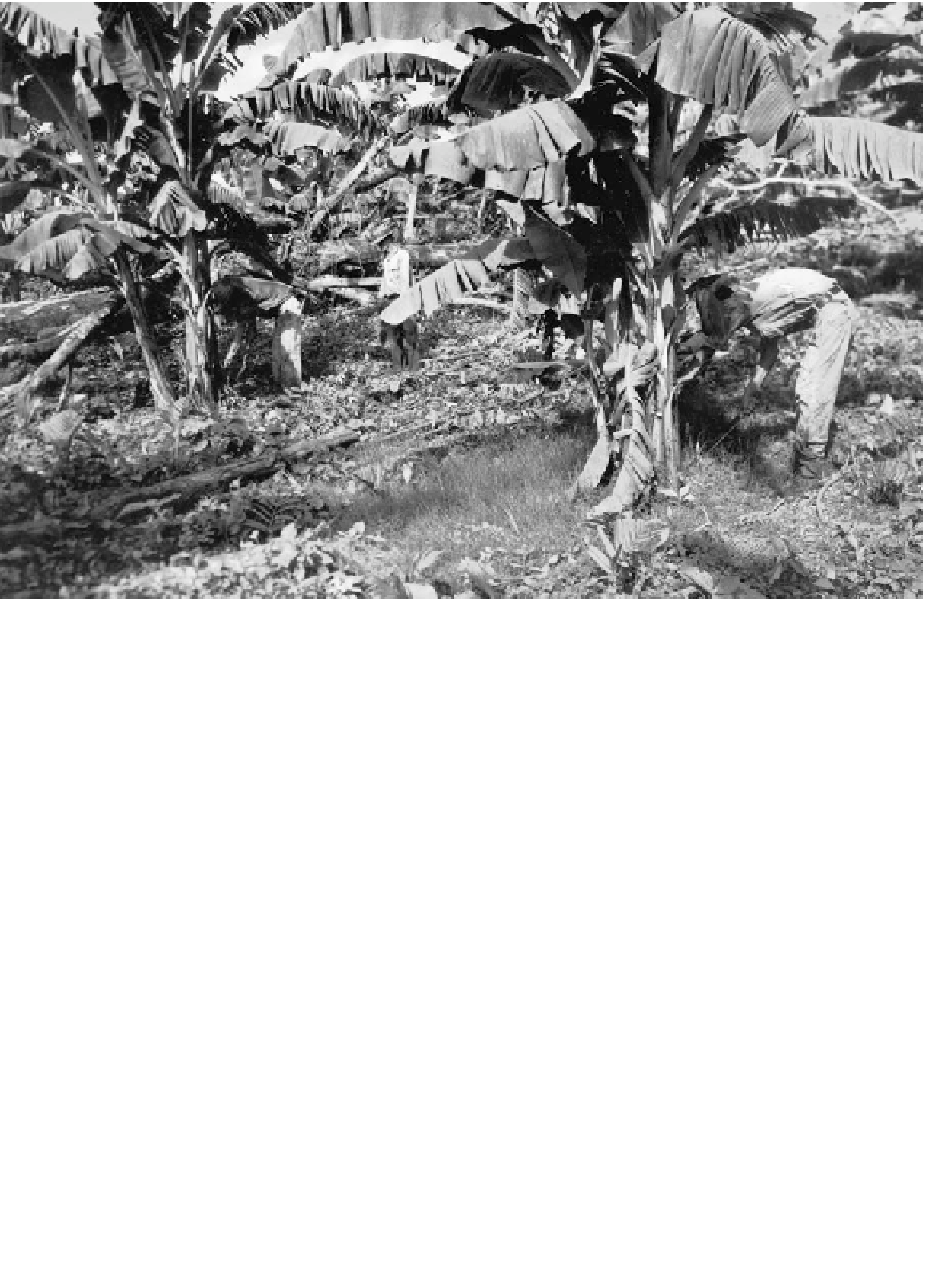Agriculture Reference
In-Depth Information
figure 7.2.UnitedFruitCompanyworkerspruningyoungbananaplantsin
Honduras(1946).UnitedFruitCompanyPhotographCollection.BakerLibrary,
HarvardBusinessSchool.
but the appearance of Black Sigatoka in the 1970s reversed the trend in
control costs. Through the early twenty-first century, Black Sigatoka re-
mained the most costlyand complex aspect of export banana production.
Black Sigatoka was not the only new pathogen that shaped banana
production in Honduras during the Cavendish era. Bacteria wilt (P.Sola-
nacearum) reached Honduras in the late 1950s, probably arriving via in-
fected Gros Michel planting stock imported from Costa Rica.
41
Disease
symptoms included the yellowing and wilting of plant foliage, deformed
roots, stunted growth, and fruit that ripened prematurely. Bacteria wilt
first gained notoriety in late-nineteenth-century Trinidad when it threat-
ened to wipe out a widely cultivated plantain variety called Moko from
which the disease acquired its popular name in the Caribbean and Central
America.
42
ThediseasedidnotdrawtheattentionofUnitedFruitresearch-
ers until the mid-1950s when it appeared on banana farms in Costa Rica.

